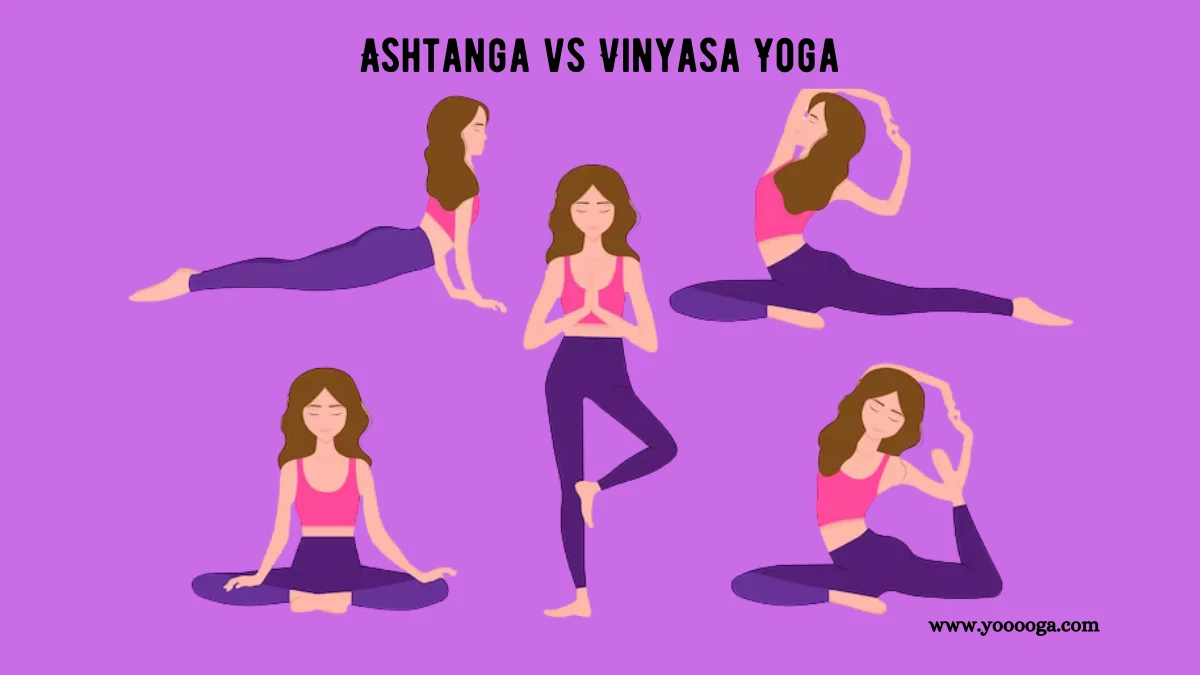YOGA
Ashtanga Vs Vinyasa Yoga? Which One Should You Choose?

Table of Contents
Is Ashtanga and Vinyasa the same?
Ashtanga and vinyasa are partly the same. Ashtanga yoga is also named as ashtanga vinyasa yoga. Ashtanga yoga meaning you do the same series of poses repeatedly, while a vinyasa yoga class varies from class to class. Ashtanga class and vinyasa share some common poses but with different emphasis.
Major differences between Ashtanga vs Vinyasa Yoga
Figuring out the difference between Ashtanga Yoga and Vinyasa Yoga is not that easy. Sometimes yogis think they practice Ashtanga Yoga, but all along, they practice Vinyasa Yoga. The major differences between ashtanga vs vinyasa can be described from three aspects.
Asana Sequence
Unlike traditional ashtanga yoga, modern ashtanga classes are centered around the Primary Sequence, which is very beginner-friendly. The primary sequence includes familiar Vinyasa flows such as sun salutations, plus a specific order of standing poses, seated poses, and chanting meditations. Ashtanga yoga emphasizes on repeating the same postures over and over again, which is designed to purify the body internally and externally through what is called the moving meditation, by helping in aligning your chakras.
Vinyasa Yoga session offers more variation and creativity. That is why many yogis find vinyasa yoga varies from class to class. Almost every class can be a little different, though it includes many familiar asanas from the Ashtanga yoga. Vinyasa yoga emphasizes the flowing poses and transitions between postures. It is a lot like a fluid dance, and these classes are more likely to play music in the studio.
Class Intensity
Ashtanga and Vinyasa Yoga differ drastically in their intensity. Apparently, Ashtanga classes tend to be the most intense and rigorous, which makes this type of yoga great for weight loss and muscle toning.
On the other side, Vinyasa yoga can also help yoga burn some calories and build strength, but it is relatively easy for beginners because it is much less intense.
Philosophy
Traditional Ashtanga classes cover more contents than modern ashtanga classes. Traditional ashtanga includes meditation, chanting mantra, self reflection, and more intense breathing exercises. It is focused around internal transformation and seek to embody the full 8 limbs of yoga both in and out of classes.
However, nowadays ashtanga is more advertised as “power yoga”, and modern ashtanga styles largely focused on fitness and remove most of the spiritual aspects of the ancient type.
While a Vinyasa yoga class sometimes include some form of mental quieting and focus, it contains less philosophical parts and doesn’t usually include meditative practice. Instead, the focus of vinyasa yoga is on breathing, and flow between different poses. That is why vinyasa yoga is also called flow yoga.
Is Ashtanga harder than Vinyasa?
Both Ashtanga yoga and Vinyasa are hard practices. It is tricky to define which form is harder than the other. For instance, some yogis may find not knowing the pose that comes next in Vinyasa yoga as being difficult. Similarly, other yogis might find the attention to breath, energy locks, and gazing point in Ashtanga as being more difficult.
Ashtanga vs Vinyasa, Which One Should You Choose?
Generally speaking, for those who practice yoga for the sheer fun of it, which a lot of people feel so, vinyasa yoga class is quite a good option as it is less intense and very friendly for beginners. As a matter of fact, you will find what you are looking for in a vinyasa yoga class.
Yogis who wish to step further and want to integrate yoga into your lifestyle, ashtanga yoga is a more satisfying choice. Why is that? For the sake of keeping it simple, Vinyasa yoga is all about breathing and flowing, also being referred as a moving meditation. Quite different from vinyasa, ashtanga yoga includes more than physical asana, such as living life in a pure, kind manner, breathing, meditation, as well as attaining a persistent state of bliss. Again, you can imagine how a yoga practitioner who seeks to learn how to integrate yoga with life both on and off the mat find more fulfillment through ashtanga.
-

 GENERAL2 months ago
GENERAL2 months agoUncovering the World of кинокрадко: The Dark Side of Film Piracy
-

 GENERAL1 month ago
GENERAL1 month agoUnveiling the Art of преводсч: How Translators Bridge Language Barriers
-

 GENERAL3 weeks ago
GENERAL3 weeks agoChristofle – For Those Who Dream of Family Heirloom Silver
-

 YOGA1 year ago
YOGA1 year ago4 Person Yoga Poses for Beginners























